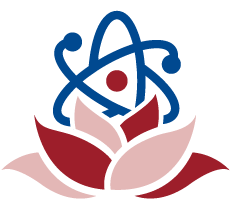| binomial distribution ཉིས་ཚན་ཁྱབ་ཚུལ། | math. A distribution giving the probability of obtaining a specified number of successes in a set of trials where each trial can end in either a success or a failure. | ཚོད་ལྟ་རེ་རེའི་གྲུབ་འབྲས་ནི་རྒྱལ་ཕམ་གང་རུང་ཡིན་པའི་ཚོད་ལྟ་ཐེངས་ངེས་ཅན་ཞིག་ཏུ་རྒྱལ་ཁ་ཐེངས་ངེས་ཅན་ཞིག་ལ་ཐོབ་སྲིད་པའི་སྲིད་ཕྱོད་མཚོན་པའི་ཁྱབ་ཚུལ། |
| binomial ཉིས་ཚན། | math. An algebraic expression of the sum or the difference of two terms. | མཚན་དུམ་གཉིས་ཀྱི་སྡོམ་ཚུལ་ལམ་འཐེན་ཚུལ་མཚོན་པའི་ཚབ་རྩིས་ཀྱི་མཚོན་ཐབས་ཤིག |
| binocular vision གཉིས་བརྒྱུད་མཐོང་སྣང་། | phys. The ability, found only in animals with forward-facing eyes, to produce a focused image of the same object simultaneously on the retinas of both eyes. This permits three-dimensional vision and contributes to distance judgement. | མིག་གཉིས་མདུན་དུ་གཏད་ཡོད་པའི་སེམས་ཅན་ཁོ་ནར་ཡོད་པའི་ནུས་པ་ཞིག་སྟེ། ནུས་པ་འདི་ལ་བརྟེན་ནས་དངོས་པོ་གཅིག་གི་གཟུགས་བརྙན་གསལ་པོ་དུས་གཅིག་ལ་མིག་གཉིས་ཀྱི་དྲ་སྐྱི་ངོས་སུ་བསྐྲུན་ནུས། འདི་ཡིས་ཕྱོགས་གསུམ་ལྡན་གྱི་མཐོང་སྣང་ཡོང་བར་བྱེད་ཅིང་རྒྱང་ཐག་ཚོད་འཛིན་ལ་རམ་འདེབས་བྱེད། |
| binocular disparity གཉིས་མཐོང་བར་ཁྱད། | phys. The small differences in the positions of the parts of the images falling on each eye that results when each eye views the scene from a slightly different position; these differences make stereoscopic vision possible | མིག་གཉིས་ཀྱིས་ཅུང་ཙམ་མི་འདྲ་བའི་གནས་ནས་ཡུལ་ཞིག་ལ་བལྟ་བའི་སྐབས་སུ་ཡུལ་དེའི་སྣང་བརྙན་གྱི་ཆ་ཤས་རྣམས་མིག་རེ་རེའི་ངོས་སུ་གནས་ཅུང་ཙམ་མི་འདྲ་བའི་སར་ཕོག་པའི་བར་ཁྱད་ཆུང་ཆུང་དེ་དག་ལ་གོ་ཞིང་། བར་ཁྱད་དེ་དག་གིས་འབུར་གཟུགས་ཀྱི་མཐོང་སྣང་སྐྲུན་པར་བྱེད། |
| binocular རྒྱང་ཤེལ། | phys. Any optical instrument designed to serve both the observer’s eyes at once. | བལྟ་མཁན་གྱི་མིག་གཉིས་པོ་དུས་གཅིག་ལ་སྤྱོད་ཆོག་པའི་ཆེད་དུ་བཟོས་པའི་འོད་རླབས་ཡོ་ཆས་གང་རུང་རུང་ཞིག |
| binding site སྡུད་གནས། | biol. An area of an ENZYME to which other molecules can attach. | འདུས་རྡུལ་གཞན་འཆིང་སྡོམ་བྱེད་ཐུབ་སའི་སྨིན་རྫས་ཀྱི་ས་ཁུལ་ཞིག་ལ་ཟེར། |
| binding problem འཆིང་སྦྱོར་དཀའ་རྙོག | neurosci. Theories of perception suggest that different aspects of the system are devoted to different aspects of vision. Separate systems are said to deal with motion, colour and form. However, we never perceive an object separated from its colour. When an object moves, its colour and shape move with it, despite these representations being registered in different cells of the visual area of the brain. This leads to the binding problem: what binds these different representations together? Because we perceive these different attributions as one, it suggests that the different cells are bound together at some stage. As yet, little is known about this problem, but it appears that the synchronous firing of nerve cells may serve to group these different attributes together. | འདུ་ཤེས་སྐོར་གྱི་རྣམ་གཞག་ཁག་གིས་མཐོང་ཚོར་མ་ལག་གི་ཆ་ཤས་མི་འདྲ་བ་ནི་མཐོང་ཚོར་གྱི་ཆ་ཤས་མི་འདྲ་བ་ཁག་དང་འབྲེལ་བ་ཡོད་པར་བརྗོད་པ་དང་། འགུལ་སྐྱོད་དང་། ཁ་དོག བཟོ་དབྱིབས་བཅས་འཛིན་པའི་མ་ལག་མི་འདྲ་བ་ཡིན། འོན་ཀྱང་། ང་ཚོས་དངོས་པོ་ཞིག་དེའི་ཁ་དོག་ལས་ལོགས་སུ་ནམ་ཡང་མཐོང་གི་མེད། དངོས་པོ་ཞིག་གི་མཚོན་དོན་འདི་དག་ཀླད་པའི་མཐོང་ཚོར་ས་ཁུལ་གྱི་ཕྲ་ཕུང་མི་འདྲ་བས་འཛིན་པར་བྱེད་ན་ཡང་། དངོས་པོ་ཞིག་འགུལ་བའི་སྐབས་སུ་དེའི་ཁ་དོག་དང་བཟོ་དབྱིབས་ཀྱང་མཉམ་དུ་འགུལ་གྱི་ཡོད། འདི་ལ་བརྟེན་ནས་འཆིང་སྦྱོར་དཀའ་རྙོག་འབྱུང་བ་སྟེ། མཚོན་དོན་མི་འདྲ་བ་འདི་དག་ཅི་ཞིག་གིས་ལྷན་གཅིག་ཏུ་འཆིང་སྦྱོར་བྱེད་དམ། ང་ཚོས་ཁྱད་ཆོས་མི་འདྲ་བ་འདི་དག་གཅིག་ཏུ་མཐོང་གི་ཡོད་པ་འདིས་ཕྲ་ཕུང་མི་འདྲ་བ་རྣམས་གནས་སྐབས་ཤིག་ལ་འཆིང་སྦྱོར་བྱས་ཡོད་པ་མཚོན་གྱི་ཡོད། ད་ལྟའི་ཆར་དཀའ་རྙོག་འདིའི་སྐོར་ཕྲན་བུ་ལས་རྟོགས་མེད། འོན་ཀྱང་། དབང་རྩ་ཕྲ་ཕུང་མང་པོས་ལས་འཇུག་ནུས་པ་མཉམ་གཏོང་བྱེད་པ་འདི་ཡིས་ཁྱད་ཆོས་འདི་དག་ལྷན་གཅིག་ཏུ་འཆིང་སྦྱོར་བྱས་ཡོད་སྲིད་པར་མངོན། |
| binding energy སྡུད་ནུས། | phys. The energy equivalent to the mass defect when nucleons bind together to form an atomic nucleus. When a nucleus is formed some energy is released by the nucleons, since they are entering a more stable lower-energy state. Therefore the energy of a nucleus consists of the energy equivalent of the mass of its individual nucleons minus the binding energy. | ལྟེ་ཆ་ཚུན་མཉམ་དུ་འབྱར་ནས་ལྟེ་རྡུལ་གྲུབ་པའི་སྐབས་སུ་བརླག་པའི་གདོས་ཚད་དང་མཉམ་པའི་ནུས་པ། ལྟེ་རྡུལ་གྲུབ་སྐབས་ལྟེ་ཆ་རྣམས་ཅུང་བརྟན་ཞིང་ནུས་པ་ཆུང་བའི་གནས་བབ་ལ་འགྲོ་བཞིན་ཡོད་པས། ལྟེ་ཆ་དེ་དག་གིས་ནུས་པ་གློད་ཀྱིན་ཡོད། དེར་བརྟེན། ལྟེ་རྡུལ་གྱི་ནུས་པ་ནི་ལྟེ་ཆ་དེ་དག་གི་གདོས་ཚད་དང་མཉམ་པའི་ནུས་པ་ནས་སྡུད་ནུས་འཐེན་པའི་ལྷག་མ་དེ་ཡིན། |
| binding སྡུད་སྦྱོར། | biol. The action of fastening or holding together, or of being linked by chemical bonds. | མཉམ་དུ་སྦྲེལ་བའམ་མཉམ་དུ་འཛིན་པའི་བྱ་བའམ། ཡང་ན། རྫས་ཀྱི་འཆིང་བས་ལྷན་དུ་སྦྲེལ་བ། |
| binary system གཉིས་ལུགས། | math. A system in which information can be expressed by combinations of the digits 0 and 1. | ཨང་ཀི་ ༠ དང་ ༡ གི་སྡེབ་ལུགས་ལ་བརྟེན་ནས་ཆ་འཕྲིན་མཚོན་པར་བྱེད་ཐུབ་པའི་མ་ལག་ཅིག |
| binary star ཟུང་སྐར། | phys. A system of two stars that revolve around each other under their mutual gravitation. | ཐུན་མོང་གི་འཐེན་ཤུགས་ཀྱི་འོག་ནས་ཕན་ཚུན་ལ་བསྐོར་བ་བྱེད་པའི་སྐར་མ་གཉིས་ཀྱི་མ་ལག་ཅིག་ལ་ཟེར། |
| binary pulsar ཟུང་བགྲོད་འཕར་སྐར། | phys. A pulsar that exists as one member of a binary star system. | ཟུང་སྐར་མ་ལག་ཅིག་གི་གྲུབ་ཆ་གཅིག་ལྟ་བུར་གནས་པའི་འཕར་སྐར་ཞིག་ལ་ཟེར། |
| Binary prefixes ཟུང་གྲངས་སྔོན་སྦྱོར། | math. | [ཟུང་གྲངས་ཀྱི་སྟོབས་གྲངས་ ༡༠ དང་ ༢༠ ལ་སོགས་པ་འབྲི་བའི་སྐབས་སུ་སིལ་གྲངས་བརྩི་ལུགས་ (kilo དང་། mega ལ་སོགས་པ་) དང་ཁྱད་པར་འབྱེད་པའི་ཆེད་དུ་བཟོས་པའི་སྔོན་སྦྱོར་ kibi དང་ mebi ལ་སོགས་པའོ།] |
| Binary number ཟུང་གྲངས། | math. | |
| Binary number system ཟུང་གྲངས་བརྩི་ལུགས། | math. | |
